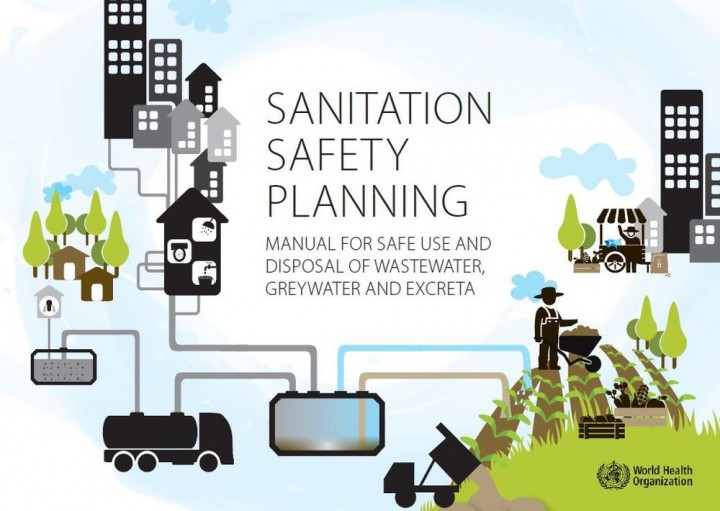Sanitation safety planning: manual for safe use and disposal of wastewater, greywater and excreta WHO (2016)
The underlying purpose of sanitation interventions is to protect public health. Management and investments in improvements on sanitation systems should be made based on adequate understanding of the actual health risks posed by the systems and how these risks might best be controlled.
Sanitation Safety Planning (SSP) is a risk based management tool for sanitation systems. This manual focuses on safe use of human waste. It assists users to:
• systematically identify and manage health risk along the sanitation chain;
• guide investment based on actual risks, to promote health benefits and minimize adverse health impacts;
• provide assurance to authorities and the public on the safety of sanitation-related products and services. SSP provides a structure to bring together actors from different sectors to identify health risks in the sanitation system and agree on improvements and regular monitoring. The approach ensures that control measures target the greatest health risks and emphasises incremental improvement over time. It is applicable in high and low resource settings. It can be used both at the planning stage for new schemes, and to improve the performance of existing systems. SSP underscores the leadership role of the health sector in the use of wastewater, excreta and greywater, and helps to bring a human health perspective to traditional non-health sectors like sanitation engineering and the agricultural sector.
This SSP manual provides practical step-by-step guidance to assist in the implementation of the 2006 WHO Guidelines for Safe Use of Wastewater, Excreta and Greywater. However, the approach and tools in the Manual can be applied to all sanitary systems to ensure the system is managed to meet health objectives.
The SSP manual is targeted at a variety of users at different levels:
• local authorities (e.g. as a tool for planning investment in sanitation especially in low resource settings);
• wastewater utility managers (e.g. to assist in managing effluent quality and safeguarding public and occupational health from source to end use or disposal);
• sanitation enterprises and farmers (e.g. to complement Quality assurance procedures for safety of end products, workers, local communities, and consumers or users of the product)
• community based organizations, farmers associations and NGOs (e.g. to support community based water and sanitation programs in safe use of human wastes).
Bibliographic information
WHO (2016). Sanitation safety planning: manual for safe use and disposal of wastewater, greywater and excreta World Health Organization (WHO), Geneva, Switzerland, ISBN 978 92 4 154924 0
Filter / Tags
Recommended by SuSanA (other than SuSanA publications)Greywater or wastewaterPractitionersGuidelines and manualsEnglish
Downloads
Sanitation safety planning: manual for safe use and disposal of wastewater, greywater and excreta
Type: application/pdf
Size: 1.49 MB

